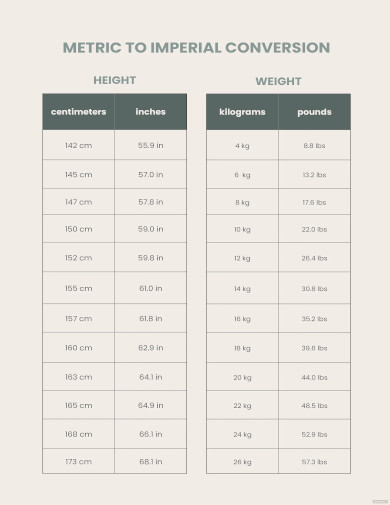The metric system is a decimal-based system of measurement used around the world. It is based on units of ten, making conversions between different units very straightforward. In the metric system, weight is measured in grams, kilograms, and metric tons.
When using a metric system weight conversion chart, it is important to understand the relationship between these units. For example, there are 1000 grams in a kilogram, and 1000 kilograms in a metric ton. This makes it easy to convert between units by simply moving decimal points.
Metric System Weight Conversion Chart
Using a Metric System Weight Conversion Chart
A metric system weight conversion chart is a handy tool for quickly converting between different units of weight. To use the chart, simply locate the unit you are starting with on the left side, and then find the unit you want to convert to on the top row. The intersection of these two units will give you the conversion factor.
For example, if you want to convert 500 grams to kilograms, you would find grams on the left side, kilograms on the top row, and locate the intersection which tells you that 500 grams is equal to 0.5 kilograms. This simple process makes converting between units in the metric system a breeze.
Benefits of Using a Metric System Weight Conversion Chart
Using a metric system weight conversion chart can save you time and effort when working with weights in different units. Whether you are cooking in grams, weighing packages in kilograms, or working in metric tons, having a conversion chart on hand can make your life much easier.
Additionally, understanding the metric system and being able to convert between units can be a valuable skill in many fields, including science, engineering, and healthcare. By familiarizing yourself with a metric system weight conversion chart, you can improve your efficiency and accuracy when working with weights in the metric system.
